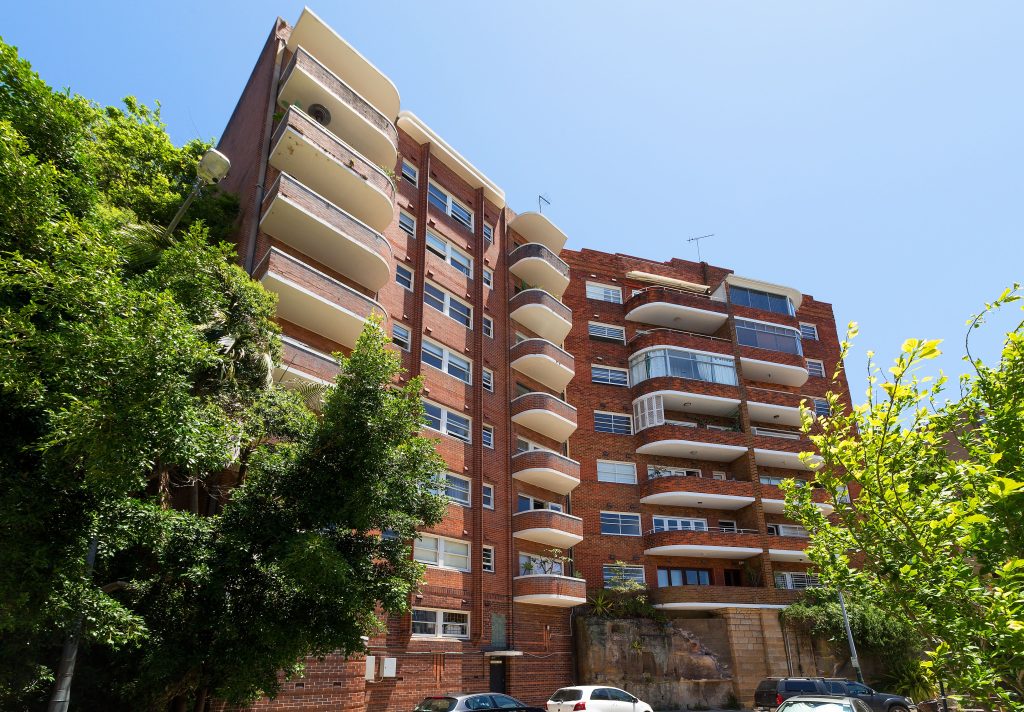36B Macleay Street, Pembroke Hall

“Pembroke”, 36B Macleay Street Elizabeth Bay, is a nine-storey block of apartments built in 1938 perched on a substantial sandstone boulder.
It is a block built upon a rock and comprises 22 one-bedroom units and studios.
Apartment 7 is for sale through Penny Timothy and Greg McKinley https://www.rwebay.com.au/7585816/
The provenance of the name is unknown but it is a distinctive block built just prior to the beginning of World War II, during the inter-war period, angled to take advantage of its east facing environment. Unusually, it seems to have two entrances and addresses: 5 Onslow Place, facing east to Sydney Harbour and overlooking the rear of Elizabeth Bay House, and its Macleay Street frontage entrance address at 36B Macleay Street.
However, another nearby apartment block, “Saint Ursula”, also claims to be number 5 Onslow Place. The reason for the anomaly is unknown but Australia post would have no difficulty delivering mail to Pembroke as its post boxes are at the 36B Macleay Street address.
During the inter-war period architectural styles followed on the heels of the Art Deco movement and then the Modernist style.
Curves were popular such as those on the nearby Ashdown apartments 96 Elizabeth Bay Road designed by Aaron Bolot, also in 1938, and Cahors, 117 Macleay Street Potts Point, built in 1939.
Curves are a design feature of Pembroke’s east-facing curved sun balconies.
The architect is unknown at this stage although further research might well reveal their identity.
On 21st November 1939 an “unusual death” was reported in the media. A 50 year-old resident, George Sterling, a Commonwealth Bank clerk, still dressed in his pyjamas, fell from the eighth floor roof garden during the night. It is not known how the incident occurred.
There were at least 37 Art Deco buildings built in the 2011 postcode area during this period making it one of the densest Art Deco areas in Australia. Pembroke exhibits period interior details such as minimalist skirting boards, combined cornice and picture rails, mottled glass used on door and bathroom and kitchen windows, yellow bathroom tiles with built-in utilities and vintage matching “crazy” patterned brown tiles.
by Andrew Woodhouse
Heritage Solutions





